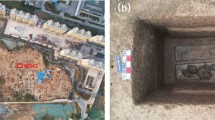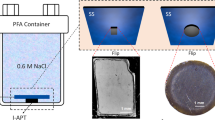Abstract
Corrosion products, obtained from lead service pipes carrying the public drinking water supply to the Glasgow area, have been characterised by FTIR spectrometry, powder x-ray diffraction spectrometry, flame atomic absorption spectrometry and ion chromatography. As expected, the products which formed in the presence of pH adjusted-water were mainly lead carbonate or basic lead carbonate. Products from areas where the water supply had been treated with orthophosphoric acid and pH adjustment for up to eight years also contained a variable proportion (up to ∼30% w/w) of a phosphate species. This has been identified as an apatite, most probably lead hydroxyapatite, Pb5(PO4)3OH.
Similar content being viewed by others
Author information
Authors and Affiliations
Additional information
Received: 3 August 1998 / Revised: 26 August 1998 / Accepted: 28 August 1998
Rights and permissions
About this article
Cite this article
Peters, N., Davidson, C., Britton, A. et al. The nature of corrosion products in lead pipes used to supply drinking water to the City of Glasgow, Scotland, UK. Fresenius J Anal Chem 363, 562–565 (1999). https://doi.org/10.1007/s002160051247
Issue Date:
DOI: https://doi.org/10.1007/s002160051247




